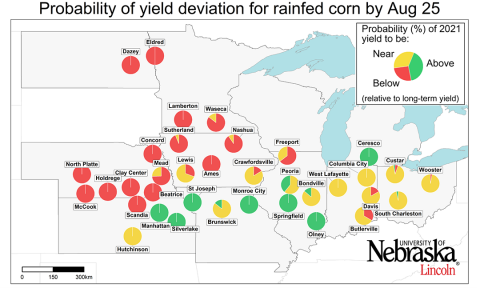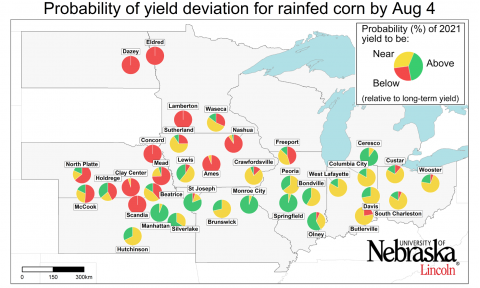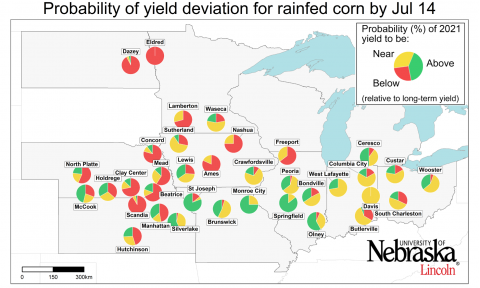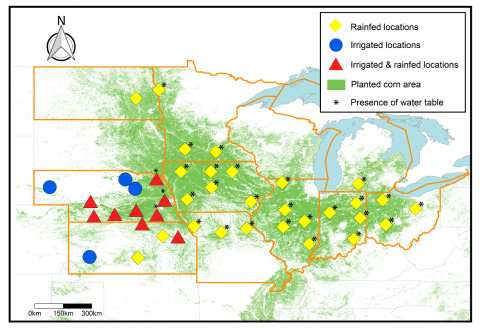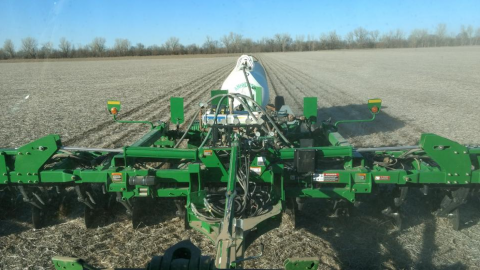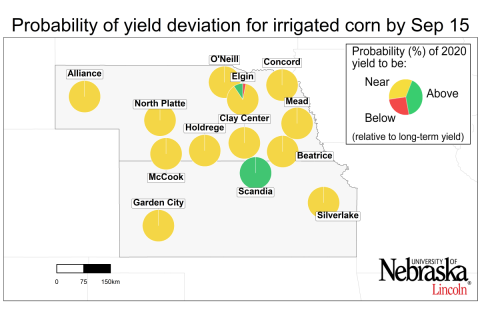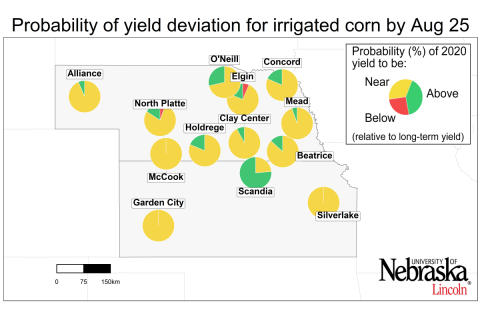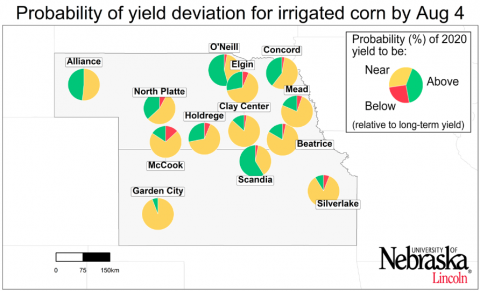2021 Corn Yield Forecasts as of Aug. 25
August 25, 2021
In line with previous forecasts in mid-July and early August, there is no indication that this is going to be a record — and not even an above average — year for national corn yield.
2021 Corn Yield Forecasts as of Aug. 4
August 4, 2021
Below-average rainfall has increased the probability of low yield for rainfed sites in western and northern parts of the Corn Belt and central Iowa.
2021 Corn Yield Forecasts as of July 14
July 14, 2021
Although it is still too early to make strong inferences about end-of-season yields for irrigated corn, there is a relatively high probability for near-average yields for a majority of sites.
2021 Corn Yield Forecasts: Approach and Interpretation of Results
June 30, 2021
The Yield Forecasting Center (YFC) will provide real-time information on corn phenology and forecasts of corn yield potential every three weeks, starting in mid-July, to aid growers and ag industry in making management, logistics and marketing decisions through the 2021 season.
Planning 2021 Fertilizer-N Application Following a Dry 2020
October 6, 2020
Fertilizer-N is a big investment for crop production in Nebraska and elsewhere. After harvest, growers tend to plan their fertilizer-N management for the next year’s crop. But the question is how much nitrogen can they apply to get the most profit from their fertilizer-N investment?
2020 Corn Yield Forecasts: End-of-season Forecasts Suggest Near-average Yields for the Region
September 17, 2020
Our forecasts suggest a near-average year for irrigated corn at most sites. For rainfed corn, the scenario is diverse across regions.
2020 Corn Yield Forecasts as of August 25
August 27, 2020
Compared with our previous forecasts, there is still a high probability of near-average yields for the majority of the irrigated sites. For rainfed corn, the scenario is diverse across regions.
2020 Corn Yield Forecasts as of August 4
August 6, 2020
Similarly to our previous forecast, there is a high probability of near-average yields for the majority of the irrigated sites. For rainfed corn, the scenario is diverse across regions.
